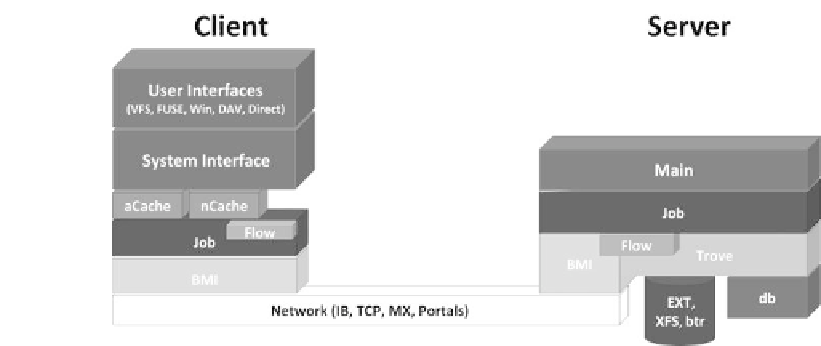Hardware Reference
In-Depth Information
FIGURE 10.1: OrangeFS architecture. The client on the left translates user
I/O calls into requests sent on the network to the server, which carries out
the requests using Trove and sends a response back to the client.
10.2.2 OrangeFS Request Protocol
Everything in OrangeFS is based on a set of requests and responses be-
tween the OrangeFS client and server. These are grouped into strict request-
response pairs, and the servers do not maintain state from one request to
another. The requests are based on the system interface. Example requests
include:
create
and
remove
lookup
getattr
and
setattr
io
and
smallio
These calls allow the client to manage and access objects on the server to
implement file structures. Much of the code in the implementation is organized
around the requests and responses for these operations.
10.2.3 File Structure Representation
Files in OrangeFS are represented by two or more objects stored on the
servers. One object is known as the metale, where most of the le's meta-
data is stored. (Although this sounds like a distinct file, it is just a type of
object.) This includes traditional metadata such as owner, permissions, and
user attributes, as well as OrangeFS specific metadata, such as the distribu-
tion method and list of data objects. In addition, one or more datafile objects







